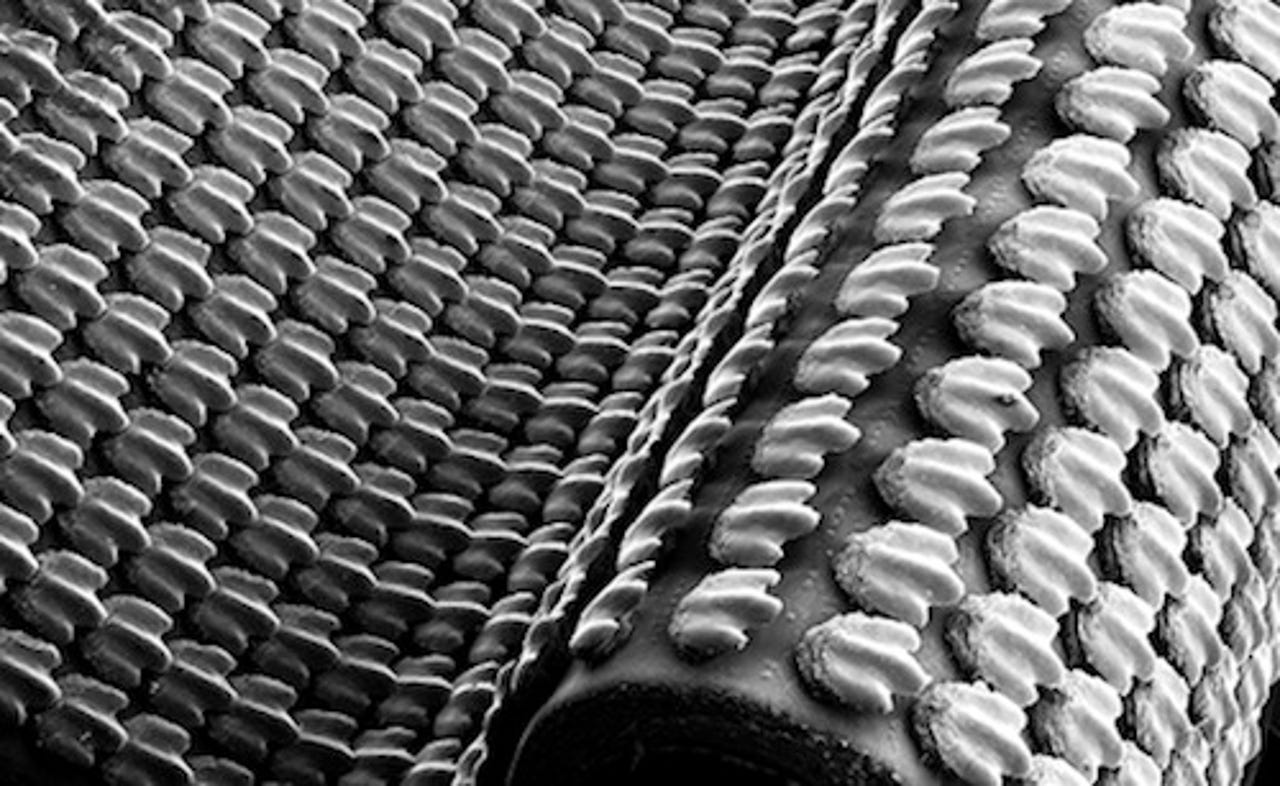Faux shark skin boosts swimming speeds

Sharks are such sleek swimmers. Yet their rough skin is actually covered with millions of microscopic, tooth-like scales called denticles. These overlapping, razor-sharp scales have little grooves that disrupt the flow of water over the shark's surface -- preventing tiny eddies from forming and reducing the drag that would otherwise hold the shark back.

Using high-resolution imaging , the team scanned a skin sample of shortfin mako (Isurus oxyrinchus) found at a local fish market, zooming in on just one denticle. They built a detailed 2-millimeter model of the structure, then reproduced it thousands of times in a computer model. Using a 3D printer, they embedded the rigid denticles in a flexible membrane and overlapped them. Pictured above, the scanning electron micrograph (SEM) of the curved membrane with denticles.
To see how well the artificial skin functions, they attached samples to both sides of a flexible foil. They held it stationary in flowing water, and then they used a robotic arm to flap it like a swimming fish. They measured the forces exerted in both cases. While the static shark skin reduced the drag on the foil by 8.7 percent at the lowest flow speeds, it produced 15 percent more drag than a smooth membrane without denticles at the highest flow speed (almost 0.6 meters per second).
However, when the team flapped the foil like a fish -- displacing its body by 1 centimeter as it wriggled at 1.5 Hz -- the synthetic shark skin increased swimming speed by 6.6 percent and reduced the energy expended by 5.9 percent.
'This is the first time that anyone has measured the energetic cost of shark skin and the reduction in swimming cost relative to a smooth surface," Lauder says. Artificial shark skin needs to have rigid scales on a flexible substrate so that the "biomimetic skin" can flex and bend like real shark skin, he explains. The material could one day be used in swimsuits to boost speed.
The work was published in the Journal of Experimental Biology last week.
[Inside JEB via Science, Gizmodo]
Image: James Weaver
Related on SmartPlanet:
- Look to nature for lessons in building resiliency
- Turning shrimp shells into plastic
- These wetsuits confuse and repel sharks
- Can 'sharkskin' on jets save fuel?
- A simple solution to dirty water: tree branches
This post was originally published on Smartplanet.com